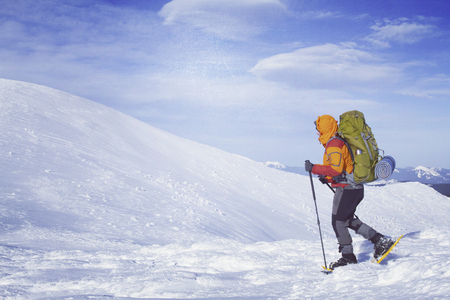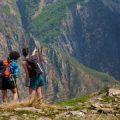Understanding Altitude Sickness in the U.S.
Altitude sickness, also known as acute mountain sickness (AMS), happens when your body doesn’t get enough oxygen at higher elevations. This condition is especially important to recognize for hikers exploring popular trails across the United States, where elevation gains can be significant and sudden. Whether you’re planning a trek in Colorado’s Rocky Mountains, California’s Sierra Nevada, or the Appalachian High Country, understanding how altitude affects your body is key to staying safe and having a great time outdoors.
What Is Altitude Sickness?
Altitude sickness occurs when you travel to a higher elevation too quickly, not giving your body enough time to adjust to the thinner air. The most common symptoms include headache, nausea, dizziness, fatigue, and trouble sleeping. While mild cases are uncomfortable, severe altitude sickness can be dangerous if ignored.
Why It Matters on American Hiking Trails
The U.S. is home to some of the world’s most famous hiking destinations—many at elevations where altitude sickness becomes a real concern. Trails like those in Rocky Mountain National Park or along California’s John Muir Trail often reach altitudes above 8,000 feet (about 2,400 meters), where symptoms can start to appear even in fit hikers.
Common Elevations Where Hikers Should Be Cautious
| Region/Trail | Typical Elevation Range | Risk of Altitude Sickness |
|---|---|---|
| Rocky Mountains (Colorado) | 7,000–14,000 ft | High (Above 8,000 ft) |
| Sierra Nevada (California) | 6,000–14,500 ft | High (Above 8,000 ft) |
| Cascade Range (Washington/Oregon) | 4,000–10,000 ft | Moderate-High (Above 7,000 ft) |
| Appalachian High Country (North Carolina/Tennessee) | 5,000–6,600 ft | Low-Moderate (Sensitive individuals may experience symptoms) |
Quick Facts for U.S. Hikers:
- Symptoms can start as low as 6,000–8,000 feet—especially if you live at sea level.
- The higher you go and the faster you ascend, the greater your risk.
- No one is immune—altitude sickness can affect anyone regardless of fitness level or age.
If you plan to hike any trail above 8,000 feet in the U.S., it’s smart to know what altitude sickness looks like and how to respond early.
2. Common Early Symptoms to Watch For
If you’re hitting the trails in places like Colorado’s Rocky Mountains or California’s Sierra Nevada, recognizing the early signs of altitude sickness can make all the difference for your safety and enjoyment. Altitude sickness often sneaks up on hikers who are new to higher elevations, so it’s important to know what to look for. Here are some common early symptoms that hikers experience on U.S. hiking trails:
Headaches
One of the most typical first signs is a headache that feels different from your usual tension or dehydration headaches. It may start as a dull ache and gradually get worse as you gain elevation, especially if you’re above 8,000 feet. If you notice this symptom, don’t ignore it—take a break, hydrate, and pay attention to how you feel.
Dizziness
Feeling dizzy or lightheaded is another red flag when hiking at high altitudes. Some hikers describe it as feeling unsteady on their feet or having trouble focusing on the trail ahead. This can be dangerous on rocky or narrow paths common in U.S. national parks, so always stop and rest if dizziness sets in.
Shortness of Breath
Even if you’re fit, thinner air means less oxygen with every breath. On steep climbs in places like Mount Rainier National Park or along the John Muir Trail, you might find yourself breathing harder than usual or needing to pause more often to catch your breath. If you struggle to recover even after stopping, it could be an early sign of altitude sickness.
Fatigue
Unusual tiredness can hit fast when hiking at high elevations. If you find yourself feeling wiped out much earlier than expected—especially compared to hikes at lower elevations—it’s time to listen to your body. Sometimes fatigue comes before any other symptoms.
Quick Reference Table: Early Symptoms of Altitude Sickness
| Symptom | Description | What to Do |
|---|---|---|
| Headache | Dull or throbbing pain not relieved by water or rest | Pause, hydrate, monitor if it worsens |
| Dizziness | Feeling lightheaded or unsteady on your feet | Sit down, eat a snack, take deep breaths |
| Shortness of Breath | Trouble catching your breath even while resting | Slow your pace, take frequent breaks |
| Fatigue | Unusual tiredness during or after moderate activity | Rest longer than usual, avoid pushing onward too soon |
If you’re exploring America’s great outdoors—whether it’s the Appalachian Trail or the Rockies—keep these early warning signs in mind. Catching symptoms early is key to staying safe and making the most of your adventure.
![]()
3. Recognizing Symptoms in Yourself and Others
Keep Tabs on Your Own Wellbeing
When hiking at higher elevations in the U.S., it’s important to check in with yourself regularly. Don’t wait until you feel really bad—early symptoms of altitude sickness can show up quickly, especially if you’ve gained elevation fast or aren’t used to thinner air. Every hiker is different, but look out for these common early signs:
| Symptom | What It Feels Like |
|---|---|
| Headache | A dull or throbbing pain, often felt behind your eyes or forehead. |
| Nausea | Queasy stomach, sometimes leading to vomiting. |
| Dizziness | Feeling lightheaded or unsteady when walking or standing. |
| Fatigue | Unusual tiredness, even with minimal effort. |
| Trouble Sleeping | Restless nights or waking up short of breath. |
| Loss of Appetite | No interest in food, even if you know you should eat. |
Watch Out for Your Hiking Buddies—American Backcountry Etiquette
Looking out for your trail partners is part of the hiking culture in the U.S.—it’s common courtesy and smart safety. In American backcountry etiquette, hikers are expected to communicate openly and check in with each other frequently. Here’s how you can help:
- Ask Simple Questions: Don’t just ask “Are you okay?” Try “How’s your head?” or “Are you feeling dizzy?” Direct questions help uncover subtle symptoms.
- Observe Behavior: If someone gets unusually quiet, struggles to keep up, seems confused, or loses their appetite, these could be early warning signs.
- Pace Together: Stick with the slowest hiker and take breaks as a group. This ensures everyone has time to catch their breath and rehydrate.
- Share Observations: If you notice changes in a friend’s behavior—like stumbling, slurred speech, or irritability—bring it up right away. On U.S. trails, open communication is key to group safety.
- Promote Hydration and Snacks: Encourage regular water breaks and eating small snacks, even if no one feels hungry or thirsty.
Quick Self-Check Routine (for Individuals)
- Breathe deeply and slowly for a minute; note if you feel dizzy or breathless.
- Squeeze your water bottle cap; if it feels hard to grip or twist, you might be dehydrated or getting sluggish.
- If you’re not sure how you feel, rate your headache and energy on a scale from 1–10 every hour. Share this info with your group.
The Buddy System: A U.S. Trail Tradition
The buddy system is more than just a rule—it’s an American backcountry tradition that helps everyone stay safer. Pair up before hitting the trail and agree to watch for symptoms together. Remind each other: it’s okay to speak up about any discomfort early on. This simple habit can make all the difference when recognizing altitude sickness before it gets serious.
4. Popular U.S. Trails Where Altitude Sickness Often Occurs
Altitude sickness can sneak up on even the most experienced hikers, especially when exploring some of America’s highest and most iconic trails. Knowing where you’re most likely to encounter these symptoms is an important part of planning a safe outdoor adventure.
Well-Known High-Altitude Regions and Trails
The United States is home to several famous mountain ranges and hiking areas where altitude sickness is a real concern. Here are some popular spots where hikers often experience symptoms:
| Region/Trail | Location | Elevation Range | Notable Facts |
|---|---|---|---|
| The Rockies | Colorado, Wyoming, Montana, Idaho, New Mexico | 7,000 – 14,000+ ft (2,100 – 4,300+ m) | Home to dozens of peaks over 14,000 ft (“Fourteeners”); rapid elevation gain common on many trails |
| Sierra Nevada | California, Nevada | 6,000 – 14,505 ft (1,800 – 4,421 m) | Includes Mount Whitney (highest point in the Lower 48); John Muir Trail and Pacific Crest Trail pass through high country |
| Colorado Fourteeners | Colorado | 13,000 – 14,439 ft (3,962 – 4,401 m) | Over 50 peaks above 14,000 ft; very popular with hikers seeking summit challenges |
| Cascade Range | Washington, Oregon, Northern California | 6,000 – 14,411 ft (1,800 – 4,392 m) | Mount Rainier (WA) and Mount Shasta (CA) are among the tallest; big elevation jumps possible on day hikes |
| The White Mountains (Presidential Range) | New Hampshire | 4,000 – 6,288 ft (1,219 – 1,917 m) | Mount Washington has famously unpredictable weather; lower elevation but still risk due to rapid ascent and weather changes |
Why Altitude Sickness Happens on These Trails
The main reason hikers get altitude sickness in these areas is because the elevation rises quickly—sometimes thousands of feet in just a few hours. In places like Colorado’s Fourteeners or California’s Sierra Nevada peaks, it’s easy to go from low valleys to thin-air summits without giving your body enough time to adjust. Even experienced hikers can feel symptoms if they don’t pace themselves or prepare properly.
Common Risk Factors on High-U.S. Trails:
- Lack of Acclimatization: Starting hikes at high elevations without spending time getting used to the altitude.
- Aggressive Itineraries: Attempting long or steep hikes too quickly increases risk.
- Travel from Sea Level: Visitors coming straight from sea level are more likely to feel symptoms than locals.
- Poor Hydration: Drier air at altitude means you lose moisture faster.
- Icy Weather: Cold temperatures can mask early signs of dehydration or fatigue.
If You’re Planning a Trip…
If you’re heading out to any of these classic American hiking destinations—especially the Rockies or the Sierra Nevada—be aware that altitude sickness is common and can affect anyone. Recognizing the early warning signs and knowing which trails pose higher risks will help you stay safe while enjoying those breathtaking views.
5. First Steps to Take if You Notice Symptoms
If you start to feel the early signs of altitude sickness while hiking on U.S. trails—like headache, nausea, dizziness, or feeling unusually tired—it’s important to take action right away. American outdoor experts recommend a few simple but crucial steps to help prevent symptoms from getting worse.
What To Do Right Away
| Action | Why It Matters |
|---|---|
| Stop and Rest | Resting gives your body a chance to adjust and prevents symptoms from getting worse. |
| Hydrate | Drinking water helps your body acclimate and can reduce headache and fatigue. |
| Don’t Go Higher | Continuing to climb puts extra stress on your body. Stay at your current elevation until you feel better. |
| Eat Light Snacks | Simple foods like trail mix or granola bars provide energy without upsetting your stomach. |
When Should You Seek Help?
If symptoms don’t improve after resting and hydrating, or if they get worse—such as confusion, trouble walking, severe shortness of breath, or vomiting—you should head down the trail to a lower elevation immediately. On many American hiking routes, there are ranger stations or staffed visitor centers where you can find medical help. If you’re in a remote area, use your phone (if you have service) or a satellite messenger to call for assistance.
Quick Reference: When to Get Help
| Symptom Gets Worse or New Symptoms Appear? | Recommended Action |
|---|---|
| Mild headache persists after rest and water | Stay put; monitor closely; descend if no improvement within an hour or two. |
| Severe headache, confusion, trouble breathing, vomiting | Descend immediately; seek emergency help as soon as possible. |
| Dizziness or fainting spells continue | Don’t wait—head down to a lower elevation right away and contact park staff if available. |
A Note on U.S. Trails and Support Services
Many popular hiking areas in the U.S., such as those in Colorado, California, and Utah, have trailhead information boards with emergency numbers and advice. Some trails offer volunteer rangers or first aid stations during peak seasons. Always check local resources before heading out, so you know where to go for help if needed.


